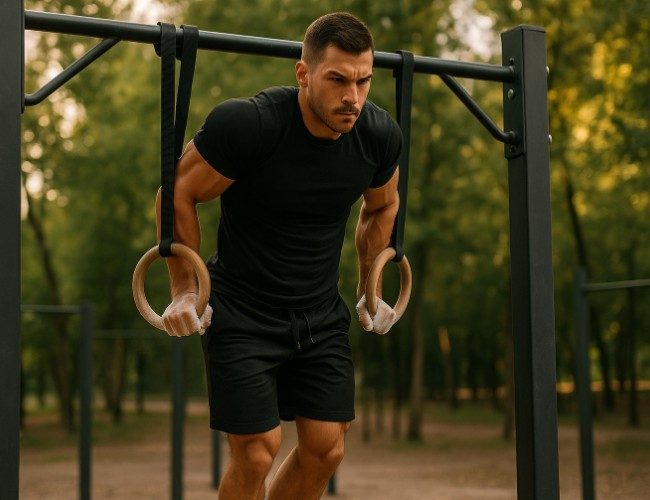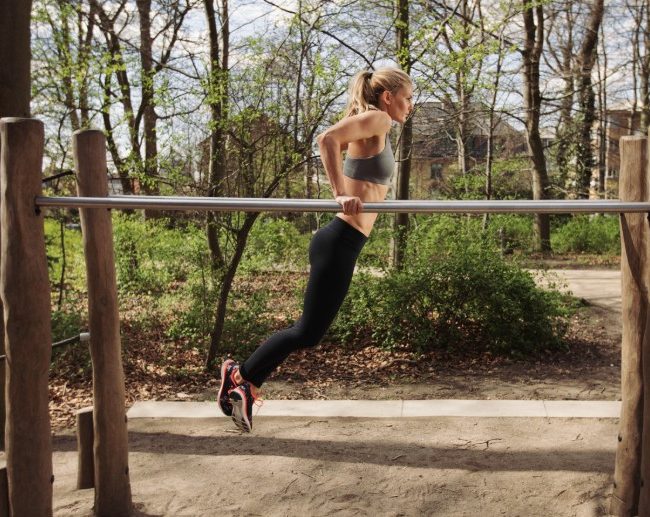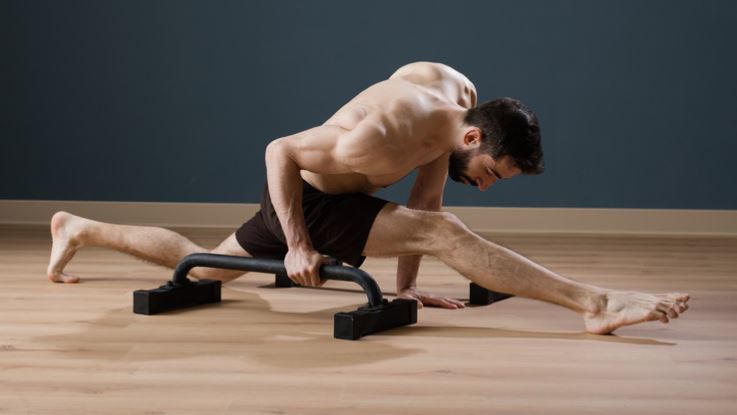
Does Calisthenics Build Muscle? – My Journey with Bodyweight Strength Training
What Is Calisthenics and How Does It Work for Muscle Building?
What is Calisthenics, Exactly?

When I first heard about calisthenics, I imagined people doing handstands or backflips in parks. But it’s more than flashy moves, it’s a training method that uses your bodyweight as resistance to build strength, endurance, and control.
Exercises like push-ups, pull-ups, dips, and squats form the foundation, and they can be modified to challenge anyone from beginners to advanced athletes.
How Does Muscle Growth (Hypertrophy) Occur?
To understand whether calisthenics builds muscle, I had to learn how muscles actually grow. Hypertrophy happens when muscle fibres are broken down during intense resistance training and rebuilt stronger during recovery, especially when paired with the right nutrition.
There are three key factors for muscle growth:
- Mechanical tension (resistance placed on muscles)
- Muscle damage (micro-tears that stimulate repair)
- Metabolic stress (burn you feel during high-rep training)
Can Bodyweight Exercises Stimulate Muscle Fibre Activation?
Yes, they absolutely can. I’ve found that slow, controlled bodyweight exercises, especially with higher reps or time under tension, can fully activate muscle fibres. In fact, certain movements like pull-ups, deep push-ups, or Bulgarian split squats challenge my muscles far more than light weights ever did.
Does Calisthenics Actually Build Muscle?
Can You Build Muscle Without Lifting Weights?
This is the million-pound question, does calisthenics build muscle without weights? From my own experience, the answer is yes, but it requires planning and patience. While you might not get bodybuilder-size muscles without external weights, lean, defined, and functional muscle is definitely possible.
What Types of Muscle Gains Are Possible With Calisthenics?
I saw gains in:
- Upper body strength and definition (chest, back, shoulders)
- Core strength and stability
- Leg endurance and tone, although building large leg muscles was more challenging
Calisthenics helped me develop dense, athletic muscle rather than bulky size.
Which Muscle Groups Respond Best to Calisthenics?
In my training, I found the following responded very well:
- Lats and biceps from pull-ups and chin-ups
- Chest, triceps, and shoulders from push-up variations and dips
- Core from planks, leg raises, and hollow holds
Legs can be trained with lunges, jump squats, and pistol squats, but it takes creativity and high volume to see major gains.
What Are the Best Calisthenics Exercises for Muscle Growth?
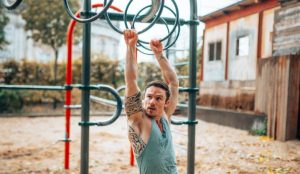
What Are the Essential Compound Movements?
Calisthenics is rooted in compound exercises, meaning they engage multiple muscle groups. These were the most effective in my journey:
- Push-ups: Variations like diamond, archer, and decline push-ups hit the chest and triceps hard.
- Pull-ups: One of the best for back and biceps. I started with negatives until I could do full reps.
- Dips: Great for triceps, shoulders, and chest when performed on parallel bars or rings.
- Squats and lunges: Ideal for legs. Pistol squats were particularly challenging but rewarding.
Do You Need Advanced Variations to Grow Muscle?
Over time, yes. Once basic moves became easy, I added difficulty by:
- Slowing down reps for more time under tension
- Trying explosive variations like clap push-ups
- Moving to one-arm or weighted variations
This type of progression mimics progressive overload, which is key for muscle development.
How Can You Progressively Overload With Just Bodyweight?
Here’s how I made calisthenics progressively harder:
| Method | Example |
| Increase reps/sets | From 3×10 push-ups to 5×20 or more |
| Add time under tension | 5-second down phase in push-ups |
| Elevate limbs | Decline push-ups, elevated feet dips |
| Reduce base of support | One-leg squats, one-arm planks |
| Use resistance bands | Loop bands to assist or resist body movements |
What Challenges Come With Building Muscle Through Calisthenics?
Is Progressive Overload Harder With Calisthenics?
In my experience, yes, but not impossible. Without weights, I had to rely on form, rep manipulation, and variation to keep progressing. It takes more creativity and a deeper understanding of body mechanics.
Can You Plateau Faster Without External Weights?
I did hit a plateau around the 3-month mark. That’s when I realised I needed to level up the difficulty, not just increase reps. Progress slowed without a proper plan, but it picked up again once I added skill-based goals like handstand push-ups.
What Mistakes Did I Make Early on?
- Doing too many reps with poor form
- Not progressing to harder variations
- Ignoring leg training
- Not eating enough to support growth
Avoiding these helped me push past limitations and keep building.
How Does Nutrition Affect Muscle Growth in Calisthenics?

Is a Surplus Still Needed for Muscle Gain?
Absolutely. Regardless of the training style, muscle won’t grow without a caloric surplus and proper macronutrient balance. I had to eat more than I burned, focusing on:
- Protein (chicken, eggs, tofu, whey)
- Healthy fats (nuts, olive oil, avocado)
- Complex carbs (brown rice, oats, whole wheat bread)
What Kind of Diet Supported My Bodyweight Training Results?
Here’s what a typical day looked like when I was gaining muscle through calisthenics:
| Meal | Foods Included |
| Breakfast | Scrambled eggs, oats with banana, black coffee |
| Lunch | Grilled chicken, quinoa, veg |
| Snack | Protein shake and nuts |
| Dinner | Salmon, sweet potatoes, leafy greens |
| Post-workout | Greek yogurt and a banana |
How Long Does It Take to See Muscle Gains with Calisthenics?
What Results Did I See in 1 Month? 3 Months? 6 Months?
- Month 1: Slight definition, better endurance
- Month 3: Visible lean muscle, improved strength
- Month 6: More control, functional muscle, upper body transformation
Which Metrics Mattered More Than Weight or Size?
Rather than obsessing over the scale, I tracked:
- Reps I could perform with proper form
- Time under tension increases
- Visual changes (especially in my upper body)
- Control and balance improvements
Calisthenics Muscle Gains vs. Gym Muscle Gains (Comparison Table)
| Feature | Calisthenics | Gym Training |
| Equipment | None or minimal | Extensive (weights, machines) |
| Cost | Free or low | Monthly membership |
| Hypertrophy speed | Slower but steady | Faster with overload tools |
| Risk of injury | Lower (if form is proper) | Higher with poor form/heavy loads |
| Flexibility required | High (mobility-focused) | Lower (machines offer fixed movement) |
| Skill progression | Very high (e.g., handstands, levers) | Moderate |
What Are the Real-Life Benefits of Calisthenics Muscle?
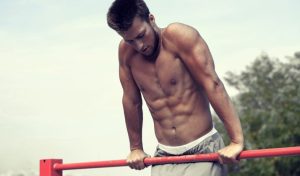
Does Bodyweight Muscle Feel More “functional”?
Definitely. I noticed a huge improvement in real-life movements, carrying groceries, climbing stairs, or even hiking uphill. My muscles weren’t just for show, they were mobile, durable, and useful.
How Did My Strength Improve Outside of the Workout?
Things like posture, balance, and injury resistance improved dramatically. I could perform daily tasks with better ease and less fatigue.
What Surprised Me About Lean Muscle vs Bulk?
I used to think bigger was always better. But the lean, defined muscle I built through calisthenics gave me more endurance, agility, and core control than bulk ever did.
Pros and Cons of Calisthenics for Muscle Building
Pros
- Free and equipment-free training
- Builds real-world, functional strength
- Develops body control, balance, and mobility
- Scalable for all levels
Cons
- Muscle growth may be slower than traditional lifting
- Requires creativity and knowledge to progress
- Harder to isolate specific muscle groups
My Personal Experience: Can You Really Build Muscle with Calisthenics?
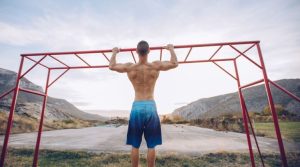
Why I Started Calisthenics?
I didn’t have access to a gym at the time and wanted a way to stay fit from home. Calisthenics was accessible, challenging, and surprisingly effective.
What Worked Best for Muscle Gain?
Focusing on form, progression, and frequency made the biggest difference. I trained 4–5 times a week, constantly tweaking my routine to add intensity.
What I’d Do Differently Today?
- I’d follow a structured program from the start
- Focus more on lower body strength
- Track nutrition and macros earlier on
Final Verdict: Is Calisthenics Enough to Build Serious Muscle?
Should You Start With Calisthenics?
If you’re on a budget, training at home, or looking to build lean, athletic muscle, yes, calisthenics is a fantastic starting point. You’ll build strength, coordination, and endurance all at once.
Can It Replace the Gym Completely?
For most casual lifters or functional athletes, yes. But if your goal is maximum size or competitive bodybuilding, you’ll eventually want access to heavier resistance.
Who is Calisthenics Muscle-building Best for?
- Beginners wanting to start with bodyweight
- People who travel or work out at home
- Athletes focused on functional strength and mobility
Does Calisthenics Build Muscle?
Yes, if done correctly with progression, good nutrition, and consistency. I’ve built real, functional muscle and improved my fitness using nothing but bodyweight. It’s a slower path than the gym, but incredibly rewarding.



